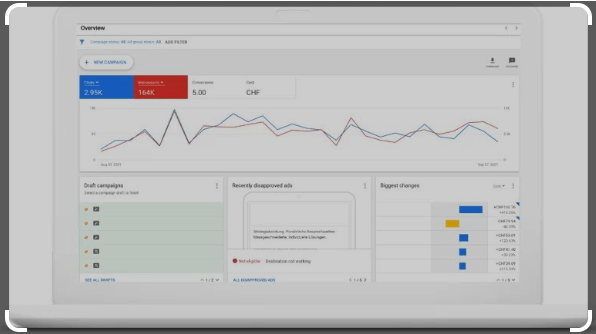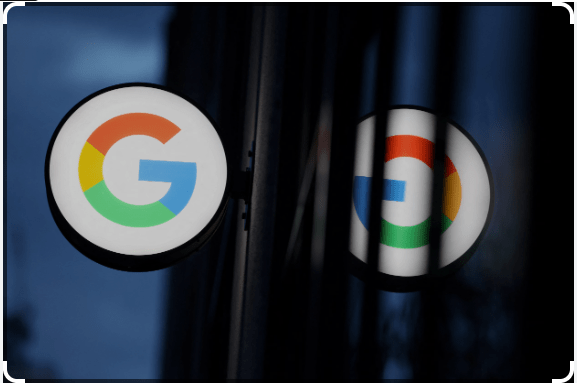Ready to take your online advertising game to the next level? Discover everything you need to know about Google Ads on Ads.Google.com/Home and learn how to create successful campaigns that generate leads, sales, and profits.
Introduction:
In today’s digital age, online advertising is more important than ever for businesses looking to reach and engage with their target audience. Google Ads is one of the most popular and effective advertising platforms, offering a wide range of tools and features to help businesses of all sizes achieve their marketing goals. With Ads.Google.com/Home, advertisers can create and manage their Google Ads campaigns with ease, maximizing their results and ROI. In this ultimate guide to Google Ads, we’ll cover everything you need to know to get started on Ads.Google.com/Home, from setting up your account and creating your first campaign to optimizing your ads and measuring your results.
Part 1: Getting Started on Ads.Google.com/Home
To get started on Ads.Google.com/Home, you’ll need to create an account and set up your first campaign. Here’s a step-by-step guide:
Step 1: Create Your Google Ads Account
If you don’t already have a Google Ads account, the first step is to create one. To do this, simply visit Ads.Google.com/Home and click on the “Start Now” button. You’ll then be prompted to sign in with your Google account or create a new one. Once you’re logged in, you’ll be taken to the Ads dashboard.
Step 2: Set Up Your Billing Information
Before you can create your first campaign, you’ll need to set up your billing information. To do this, click on the “Tools & Settings” icon in the top right-hand corner of the dashboard and select “Billing & Payments.” Here, you can choose your preferred payment method, add your billing information, and set your billing preferences.
Step 3: Create Your First Campaign
Now it’s time to create your first campaign. To do this, click on the “+ Campaign” button in the dashboard and select the type of campaign you want to create. Google Ads offers several different campaign types, including search, display, shopping, video, and app. Choose the type that best aligns with your marketing goals.
Step 4: Choose Your Campaign Settings
Next, you’ll need to choose your campaign settings. This includes setting your budget, selecting your target audience, choosing your ad format, and creating your ad copy. Make sure to choose settings that align with your marketing goals and target audience.
Part 2: Creating Successful Google Ads Campaigns
Creating a successful Google Ads campaign requires a combination of strategy, creativity, and analysis. Here are some tips to help you create effective ads that generate leads, sales, and profits:
Tip 1: Define Your Marketing Goals
Before you create your ads, it’s important to define your marketing goals. Are you looking to generate leads, increase sales, boost brand awareness, or drive website traffic? Your marketing goals will dictate the type of campaign you create and the metrics you use to measure your success.
Tip 2: Conduct Keyword Research
Keyword research is a critical component of creating successful Google Ads campaigns. Use keyword research tools like Google Keyword Planner to identify the keywords and phrases your target audience is searching for. Use these keywords in your ad copy to increase relevancy and improve your ad’s performance.
Tip 3: Use Compelling Ad Copy
Your ad copy is what will capture your audience’s attention and entice them to click on your ad. Use compelling headlines, strong calls to action, and relevant messaging that speaks directly to your target audience. Make sure your ad copy aligns with your marketing goals and stands out from the competition.
Tip 4: Use Ad Extensions
Ad extensions are additional features that can be added to your Google Ads campaign to provide more information to your audience and improve your ad’s performance. Ad extensions can include location information, phone numbers, links to specific pages on your website, and more. Using ad extensions can increase the visibility of your ads and provide more value to your audience.
Tip 5: Test and Refine Your Ads
Creating successful Google Ads campaigns requires ongoing testing and refinement. Use A/B testing to experiment with different ad copy, images, and targeting options to see what works best for your audience. Continuously analyze your campaign performance and adjust your strategy as needed to optimize your results.
Part 3: Optimizing Your Google Ads Campaigns
To maximize the results of your Google Ads campaigns, you’ll need to continuously optimize your strategy. Here are some tips to help you improve your campaign performance and drive better results:
Tip 1: Monitor Your Campaign Performance
Regularly monitor your campaign performance to identify areas for improvement. Use the metrics provided in your Google Ads dashboard to track your impressions, clicks, conversions, and other important data. Use this data to identify areas where you can improve your targeting, ad copy, or other campaign settings.
Tip 2: Refine Your Targeting
Refine your targeting to ensure that your ads are being shown to the right audience. Use targeting options like geographic location, demographics, interests, and behavior to narrow down your audience and reach the people most likely to be interested in your products or services.
Tip 3: Optimize Your Landing Pages
Your landing pages are where your audience will be directed after they click on your ad. Make sure your landing pages are optimized for conversions by providing clear and compelling messaging, easy-to-use forms, and strong calls to action. Test different landing page variations to see which ones perform best.
Tip 4: Use Automated Bidding Strategies
Google Ads offers several automated bidding strategies that can help you optimize your bidding and maximize your return on investment. Automated bidding strategies use machine learning to adjust your bids based on real-time data, helping you to reach your marketing goals more efficiently.
Part 4: Measuring Your Google Ads Success
Measuring your Google Ads success is essential for understanding the effectiveness of your campaigns and identifying areas for improvement. Here are some key metrics to track:
- Impressions: The number of times your ad was displayed to users.
- Clicks: The number of times users clicked on your ad.
- Click-through rate (CTR): The percentage of users who clicked on your ad after seeing it.
- Conversion rate: The percentage of users who completed a desired action on your website, such as making a purchase or filling out a form.
- Cost per click (CPC): The average cost you pay for each click on your ad.
- Return on investment (ROI): The ratio of revenue generated to the cost of your advertising.
By tracking these metrics, you can gain insight into the effectiveness of your campaigns and make data-driven decisions to optimize your strategy.
Conclusion:
Google Ads on Ads.Google.com/Home is a powerful advertising platform that can help businesses of all sizes reach and engage with their target audience. By following the tips and strategies outlined in this guide, you can create successful campaigns that generate leads, sales, and profits. Remember to continuously optimize your strategy, test different ad variations, and measure your results to achieve the best possible outcome.








